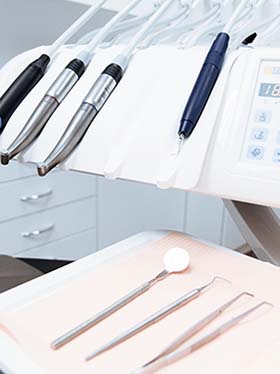Prairie State College (PSC), located just outside of Chicago in Illinois, serves a geographically and racially diverse district and is designated as a predominately black institution. However, students enrolled in our dental hygiene program do not reflect this diversity. Specifically, the dental hygiene program serves a disproportionate number of Caucasian students as compared to the college as a whole. One key factor that is influencing this inequity is the composition of in-district versus out-of-district students in our dental hygiene program. The out-of-district students in the dental hygiene program are more likely to be Caucasian and female, and the program’s enrollment has been composed of more out-of-district students than in-district students over the last few years. Our college would like the dental hygiene department to better serve our local community to reflect the diversity of the institution and district.
The dental hygiene program has an agreement with neighboring community colleges to allow their students to apply to the PSC dental hygiene program if the program is not offered at their district community college. Over the last few years, discrepancy between the number of accepted in-district applicants and out-of-district applicants has grown. On average, 78% of the applicants and accepted students are from out of the district. Our current Pathways to Results (PTR) project seeks to address this inequity.
The dental hygiene program is a 2-year program, with students receiving an associate degree after completion. While the program is designed to allow a student to be able to complete it in two years, it is highly recommended that students take prerequisite courses prior to application to the program. This process has caused some students to take three or four years to complete an associate degree in dental hygiene.
Our goal is to make the application process equitable while maintaining an acceptance of well-prepared students. Currently, the application process ranks students by the number of college courses completed, as well as their scores on the HESI entrance exam. Utilizing the HESI exam has allowed us to align ourselves with the other allied health professions departments at PSC.
Students from out-of-district colleges are required to complete all of their general education courses at their in-district community college prior to application to the dental hygiene program. This has contributed to inequity in the application process as in-district students had completed far fewer courses, so their scores in the final ranking system were much lower.
It was decided a year ago to recommend that all applicants to the dental hygiene program complete their general education requirements prior to application. Although this allowed the in-district students to be more competitive within the ranking system, it still caused the students to have to complete one or two more years of college prior to application to the dental hygiene program. In-district students were also awarded an additional 3 points for being in-district.
As a result of our PTR project, we have decided to change the application process to include only the HESI score and the Biology 221, Biology 222, and Chemistry 105 or 110 courses, which are the courses considered prerequisites for application to the program. Prospective students must also achieve a PSC Assessment Exam placement score at an English 101 level. We are also awarding in-district students an additional 5 points.
However, we do realize that some students “test” well, while other students perform better in course material. Furthermore, we believe that a high score on the HESI exam does not necessarily equate with success in the dental hygiene program. Therefore, the next step that we are considering is how to weigh the value of the HESI score. It is possible to allow the student who has scored higher in the course material to receive additional points to make it more equitable between the two sections.
What are your thoughts? Has your institution experienced similar challenges? How would you change the application process to accommodate the possible discrepancies between an entrance exam and course material? What recommendations would you have for us to remove this inequity in the application process between in-district and out-of-district students?
Dr. Susan Foundos-Biegel is a Assistant Professor at Prairie State College.
